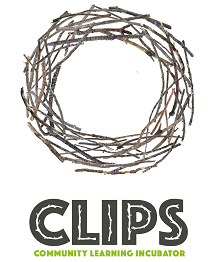Key points
- Community is elementary in vast majority of group projects; groups that foster community spirit and a sense of belonging have a stronger collective identity
- Groups need to ensure that people meet in diverse setups, both formal and informal, to create the necessary cohesiveness (the “glue” of community)
- Communication should be direct, honest, pure, kind; with good listening being just as important as speaking skills
- Deep sharing, meaningful rituals, celebrations and joyful activities are all elements of a well functioning community
- Official meetings deal with administrative, operative and social issues and need to be well organised and facilitated
- All groups encounter challenges once intimacy develops (either close friendships or romantic feelings)
- Conflicts arise no matter how much care is taken to avoid them; it is better to have methods of conflict resolution prepared in advance than to look for them once the conflict is already ablaze.
Overview
This chapter covers elements related to community, including those that are not relevant to all groups. However, since this is a community incubator it seemed appropriate to cover topics of community extensively. This further seek to make the CLIPS guide comprehensive, inspirational and appropriate for a wide variety of group projects.
Community is central to developing group projects. Experienced people understand this well, but most projects still tend to focus mainly on intention and structure, neglecting community, as the common territory. In some languages the word “community” has strong connotations: archaic, religious, political, anarchistic etc. It does not have the ring of modern words: team, crew, club, league, company, or collective. However, community dynamics are something that any kind of group has to deal with, particularly if it puts people’s real needs to the center and then designs the organisation around those needs, instead of expecting people to follow the organisational rules even at the expense of their human needs. Setting up and maintaining the community takes a lot of energy initially, but it pays of in the long run – even in the organisational sense.
One of the mistakes group projects often do is trying to resolve interpersonal issues by introducing more rules and making the organisation more rigid, thus brushing the real problem under the carpet. (See: Community Building by Scott Peck).
Whoever tried to build a community knows it does not just happen.
Spontaneous community building is possible indeed, but it usually leads to unpredictable outcomes and can involve high risks. Conscious fostering of community spirit should therefore be present in every phase of developing a group project.
Community cannot be fostered through strictly rational (left-brain) activities alone. Creating and maintaining group identity requires: open, trustful and respectful communication culture, where addressing difficult topics is possible without fear of punishment; rituals and celebrations; having fun while doing things together and space for emotional expression.
Intimate relationships, whether between romantic partners or between spouses, influence group dynamics greatly. A family (or even a couple) is the smallest form of community within the wider community and attention should be given to how these two levels of community interact and affect each other.
Communities mature over time. It can be said that they are mature when they have brought to life strong community spirit and incorporated key structural elements, particularly common, effective methods of self-governance, and conflict resolution. Substantial part of community building consists of striving for win-win solutions.
When community spirit and functional structures work together in a mature group the result is likely that mutual support among members is lively, everyone like to attend events (common meals, anniversaries, meetings), members with special needs have a place in the community and get assistance when they need it, children feel included, etc.
Here we will explore further each of the key aspects of community building, starting from the core of every community; its identity and spirit.







